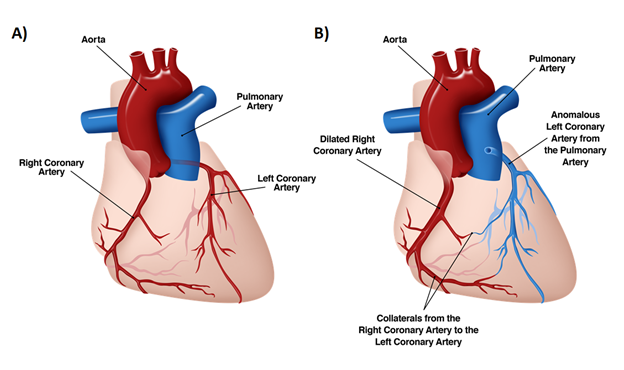Sudden cardiac arrest in a 21-year-old female patient who collapsed while exercising.
A 21-year-old female had a cardiac arrest while she was exercising in a gym. She collapsed suddenly without any warning signs. The fellow members of the gym immediately started cardiopulmonary resuscitation (CPR). They performed 30 compressions followed by 2 rescue breaths with 100 to 120 compressions per minute. They delivered shocks using an automated external defibrillator. Thereafter, she was taken to the hospital.
After a series of investigations, the patient received a diagnosis of Bland White Garland Syndrome (BWGS). It is a very rare disease with a ratio of 1: 300 000 live births. It is an anomaly of the coronary artery in which the left coronary artery originates from the pulmonary trunk. Although some patients may be incidentally diagnosed on imaging, some may present with fatal symptoms. The clinical manifestations include arrhythmias, chest pain, shortness of breath, sudden cardiac arrest, impaired left ventricular function, mitral regurgitation, and progressive heart failure, and myocardial infarction. However, the most common cause of death in such patients is sudden cardiac arrest.
Owing to the rarity of the disease, the management approach still remains uncertain. In the medical literature, the long term prognosis after surgery of adult patients with BWGS is quite limited. Therefore, there is not enough data to support the effectiveness of surgical repair in reducing the risk of malignant ventricular arrhythmia recurrence. Moreover, the role of implantable defibrillator remains controversial. However, the implantable cardioverter-defibrillator (ICD) is acceptable in patients with BWGS who have the risk factors of SCD.
In this case, the patient was immediately rescued by CPR and AED. Therefore, she survived. This also highlights the importance of training the public with the basic first aid and CPR skills.




